Yes, folks, Saturday, December 3, 2022 will be the day. Starting December 3, you will only get three months to respond to a USPTO trademark Office Action instead of the usual six months. This article hopefully answers some of your questions about this change. Continue reading “December 3 will be the day — three months for trademark responses to Office actions”
The “where you sleep at night” Federal Circuit appeal – amicus brief
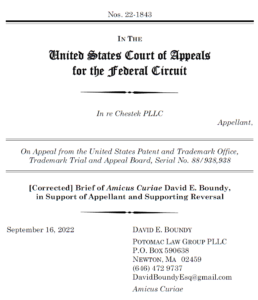
(Update: The oral argument took place on December 7, 2023 and you can see the transcript here.)
(Update: the appellee’s brief has been filed – blog article.)
(Update: the appellant’s reply brief has been filed – blog article.)
Readers will recall that a few days ago I wrote:
This would be a perfect time for amici to file amicus briefs.
An amicus brief has now been filed in the case about the Trademark Office demanding to know where the trademark applicant sleeps at night (blog article). You can see the amicus brief here.
The “where you sleep at night” Federal Circuit appeal – first brief
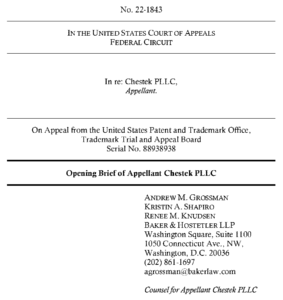
(update: an amicus brief has been filed.)
(update: the appellee’s brief has been filed.)
(update: the appellant’s reply brief has been filed.)
Many readers are aware of the keen obsession that the Trademark Office at the USPTO has in knowing where trademark applicants sleep at night. Readers who are familiar with the statutes and rules and accumulated court cases relating to the right and wrong ways to do “rulemaking” may also have gone to the trouble of looking at the steps that the Trademark Office followed in promulgating its rules that, since a couple of years ago, have required applicants to reveal to the Trademark Office where they sleep at night. But perhaps not so many readers are aware that right now there is pending in the Court of Appeals for the Federal Circuit a case that asks the Court to consider striking down those rules.
There is now an important development in that Court of Appeals case. Continue reading “The “where you sleep at night” Federal Circuit appeal – first brief”
How often do you check the Systems Status page?

If you regularly make use of TEAS or PAIR or Patentcenter or EFS-Web, you probably find yourself checking the USPTO Systems Status and Availability web page (screen shot at right) from time to time.
Wouldn’t it be nice if somehow you could be notified automatically when that web page changes? Well, now you can be notified automatically, if you choose to participate in a beta test of my new change-detection system. Continue reading “How often do you check the Systems Status page?”
Today is the day for the Polish patent office
 Yes, you heard it here first (blog article). On August 5, 2022, I was the first to tell you this very exciting news about the Polish patent office becoming trendy, modern, and up-to-date. Continue reading “Today is the day for the Polish patent office”
Yes, you heard it here first (blog article). On August 5, 2022, I was the first to tell you this very exciting news about the Polish patent office becoming trendy, modern, and up-to-date. Continue reading “Today is the day for the Polish patent office”
Polish patent office becomes trendy, modern, and up-to-date
 I am delighted to be able to report that the Polish patent office has become trendy, modern and up-to-date. Continue reading “Polish patent office becomes trendy, modern, and up-to-date”
I am delighted to be able to report that the Polish patent office has become trendy, modern and up-to-date. Continue reading “Polish patent office becomes trendy, modern, and up-to-date”
More US trademark applications that lack an Examining Attorney
Yesterday (blog article) I reported half a dozen US trademark applications that had been filed as much as 2½ years ago and still did not have an Examining Attorney. Here are five more US trademark applications that were filed a long time ago and still do not have an Examining Attorney:
| Application Number |
Filing Date |
| 90824061 | 12 July 2021 |
| 90833853 | 16 July 2021 |
| 90833862 | 16 July 2021 |
| 90833857 | 16 July 2021 |
| 90849560 | 26 July 2021 |
Continue reading “More US trademark applications that lack an Examining Attorney”
Why a “presentation copy” from the USPTO is no good
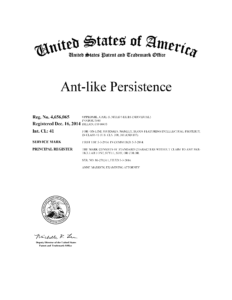
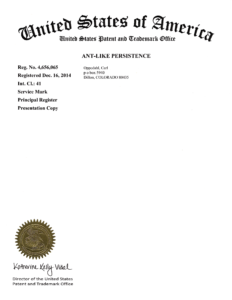
As I explain in this blog article, “presentation copies” from the USPTO are not very good from a “suitability for framing” point of view. But what is much worse is that “presentation copies” are going to cause harm to the trademark community. The Trademark Office’s recent spotlight on “presentation copies”, and indeed the Trademark Office’s recent program of giving them away for free, will very predictably embolden some trademark owners in overstating the breadth of their trademark rights. The Trademark Office will be aiding and abetting the intimidation of parties who are not actually doing anything wrong but who are the target of overly broad cease-and-desist letters. Continue reading “Why a “presentation copy” from the USPTO is no good”
US trademark applications that lack an Examining Attorney
(July 11, 2022. Updated to provide a TSDR link for each application number. Still none of the applications has been given to an Examining Attorney.)
The USPTO reports a pendency of around six to seven months for newly filed US trademark applications. But there are quite a few trademark applications that were filed a lot longer ago than that, that still do not have an Examining Attorney. Here are some examples:
| Application Number |
Filing date |
| 88704832 | November 25, 2019 |
| 88729476 | December 17, 2019 |
| 88729463 | December 17, 2019 |
| 88729452 | December 17, 2019 |
| 88729389 | December 16, 2019 |
| 88794834 | February 12, 2020 |
As you will see, the oldest one on this list was filed more than 2½ years ago and still does not have an Examining Attorney. I hope and trust that some reader of this blog article who works in the Trademark Office will pass along these six application numbers to whoever it is that is responsible for assigning Examining Attorneys to trademark applications.
It strikes me that this is the sort of thing that computers are supposed to be good at. How can it possibly be that the Trademark Office does not already have some automated process that runs, say, once a month, and generates a report like this? Such a report would permit the appropriate Trademark Office person to take corrective action (see 37 C.F.R. § 2.23(d) and TMEP § 108.03) by assigning an Examining Attorney.
Today is the day for Turkey and the DAS system
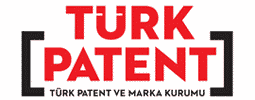 Today is the big day for the Turkish Patent and Trademark Office and the WIPO DAS system. Starting today, the Turkish Patent and Trademark Office is a Depositing Office for every type of application for which it is possible to be a Depositing Office. Continue reading “Today is the day for Turkey and the DAS system”
Today is the big day for the Turkish Patent and Trademark Office and the WIPO DAS system. Starting today, the Turkish Patent and Trademark Office is a Depositing Office for every type of application for which it is possible to be a Depositing Office. Continue reading “Today is the day for Turkey and the DAS system”
